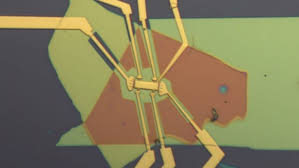
Breaking News
 Grand Theft World Podcast 257 | Foreign Affairs with guest Ernest Hancock
Grand Theft World Podcast 257 | Foreign Affairs with guest Ernest Hancock
 You've Never Seen Tech Like This
You've Never Seen Tech Like This
 Supreme Court Won't Exempt California Schoolchild From Vaccination Mandate
Supreme Court Won't Exempt California Schoolchild From Vaccination Mandate
 Visualizing the abundance of elements in the Earth's crust
Visualizing the abundance of elements in the Earth's crust
Top Tech News
 3D Printed Aluminum Alloy Sets Strength Record on Path to Lighter Aircraft Systems
3D Printed Aluminum Alloy Sets Strength Record on Path to Lighter Aircraft Systems
 Big Brother just got an upgrade.
Big Brother just got an upgrade.
SEMI-NEWS/SEMI-SATIRE: October 12, 2025 Edition
 Stem Cell Breakthrough for People with Parkinson's
Stem Cell Breakthrough for People with Parkinson's
 Linux Will Work For You. Time to Dump Windows 10. And Don't Bother with Windows 11
Linux Will Work For You. Time to Dump Windows 10. And Don't Bother with Windows 11
 XAI Using $18 Billion to Get 300,000 More Nvidia B200 Chips
XAI Using $18 Billion to Get 300,000 More Nvidia B200 Chips
 Immortal Monkeys? Not Quite, But Scientists Just Reversed Aging With 'Super' Stem Cells
Immortal Monkeys? Not Quite, But Scientists Just Reversed Aging With 'Super' Stem Cells
 ICE To Buy Tool That Tracks Locations Of Hundreds Of Millions Of Phones Every Day
ICE To Buy Tool That Tracks Locations Of Hundreds Of Millions Of Phones Every Day
 Yixiang 16kWh Battery For $1,920!? New Design!
Yixiang 16kWh Battery For $1,920!? New Design!
 Find a COMPATIBLE Linux Computer for $200+: Roadmap to Linux. Part 1
Find a COMPATIBLE Linux Computer for $200+: Roadmap to Linux. Part 1
Twisted graphene exhibits previously-unseen form of magnetism

That's surprising enough, but it turns out this particular form of magnetism has previously only been theorized.
Since it's only one atom thick, graphene is effectively two-dimensional. That forces electrons traveling through it to only move along two axes, which in turn creates a host of unusual properties that have given graphene the moniker of a "wonder material."
From that starting point, graphene sheets can be stacked and manipulated in other ways to give it different abilities. In a study last year, an MIT team found that graphene could become a superconductor, meaning electricity passes through it freely with zero resistance. This was done by stacking two sheets and twisting them so their patterns don't quite line up, forming what's called twisted bilayer graphene.
The Stanford team set out to reproduce these results and build on them. In doing so, they accidentally made the graphene exhibit magnetism. They discovered this while sending an electrical current into a graphene sample, when a large voltage was detected perpendicular to the flow of the current. This normally needs a magnetic field to happen, but strangely the voltage stuck around when the external magnetic field was turned off. That means the graphene itself was generating an internal magnetic field.



